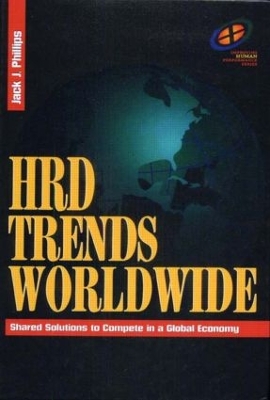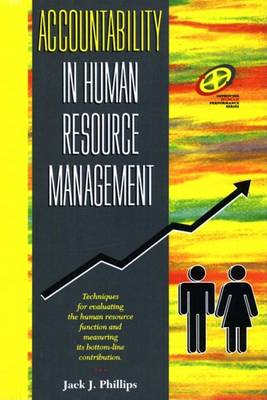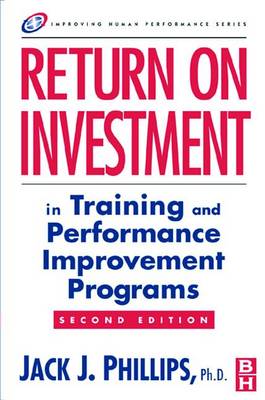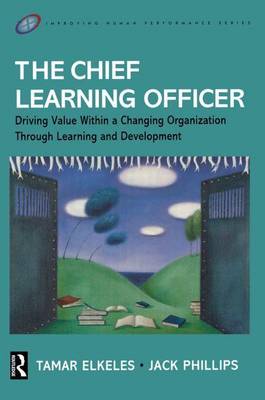Improving Human Performance
7 total works
Meet the demands of a competitive worldwide competitive economy. Discover the relevance of these 16 global HRD trends to your organization:
* Strategy and training * Needs assessment and analysis
* Performance improvement * Corporate universities
* Training and delivery * Shared responsibilities
* Systematic evaluation * Measuring the return on investment (ROI)
* Training costs * Profit centers
* Budgeting * Learning objectives
* Management partnerships * Technology
* Global training programs * Outsourcing
Jack Phillips noticed something while consulting for organizations all over the world. He discovered that training and development departments - even though they are in different countries - experience many of the same issues and challenges. He recognized and then researched, sixteen critical global HRD trends.
These sixteen noteworthy trends were formulated by surveying thirty-five organizations in various industrialized countries, as well as actually working with training and development departments across the globe. This firsthand global HRD experience verified and brought to life the trends.
As a result of the author's investigation, 'HRD Trends Worldwide' outlines each HRD trend and helps you thoroughly understand them all and, more importantly, put them to good use.
This text presents the survey results and explains each trend through examples and evidence. To help you work with the trends, the text provides an examination of each trend's potential impact on your training and performance improvement functions.
Every HRD and training and development professional interested in meeting the demands of a competitive worldwide economy should make reading this book a priority.
This guide develops a results-based approach to human resources that keeps an eye on the bottom line. Based on actual experiences, accepted practices, and a strong 10-year research base, it clearly shows you how to:
Uncover and monitor the costs of human resource (HR) programs
Develop programs emphasizing accountability
Design data-collection instruments for evaluation
Measure the contribution of human resources
Calculate the return on investment
Elevate management's commitment to HR programs
Phillips' nine-step, results-based human resource model helps you analyze, create, and execute successful HR programs. In addition, you'll find a Human Resources Effectiveness Index you can use to measure the overall effectiveness of HR performance. A benchmarking chapter assists you in comparing your success against other organizations. HR professionals, top- and middle-level managers, and students of human resources management will find this book an invaluable resource in which each technique and idea has been tested and proven in actual practice.
'Accountability in Human Resource Management' develops a results-based approach to human resources that keeps an eye on the bottom line. Based on actual experiences, accepted practices, and a strong 10-year research base, it clearly shows you how to:
*Uncover and monitor the costs of human resource (HR) programs
*Develop programs emphasizing accountability
*Design data-collection instruments for evaluation
*Measure the contribution of human resources
*Calculate the return on investment
*Elevate management's commitment to HR programs
Phillips' nine-step, results-based human resource model helps you analyze, create, and execute successful HR programs. In addition, you'll find a Human Resources Effectiveness Index you can use to measure the overall effectiveness of HR performance. A benchmarking chapter assists you in comparing your success against other organizations. HR professionals, top- and middle-level managers, and students of human resources management will find this book an invaluable resource in which each technique and idea has been tested and proven in actual practice.
Return on Investment in Training and Performance Improvement Programs
by Jack J Phillips
This groundbreaking book guides the reader through a proven, results-based approach to calculating the Return on Investment in training and performance improvement programs. Jack Phillips has composed user-friendly ROI calculations, plus:
* ten post-program data collection methods
* ten strategies for determining the amount of improvement that is directly linked to training programs
* ten techniques for converting both hard and soft data to monetary values
This book also details implementation issues, provides worksheets, and pinpoints non-monetary program benefits. A case study takes you through the ROI process step-by-step.
Don't wait for the budget axe. With this book, you get the strategy you need to turn your training/HRD department into a visible, indispensable profit center.
Any human resource manager knows they contribute to their organization's bottom line--here's how to prove it.
This groundbreaking book guides the reader through a proven, results-based approach to calculating the Return on Investment in training and performance improvement programs. Jack Phillips has composed user-friendly ROI calculations, plus:
* ten post-program data collection methods
* ten strategies for determining the amount of improvement that is directly linked to training programs
* ten techniques for converting both hard and soft data to monetary values
This book also details implementation issues, provides worksheets, and pinpoints non-monetary program benefits. A case study takes you through the ROI process step-by-step.
Don't wait for the budget axe. With this book, you get the strategy you need to turn your training/HRD department into a visible, indispensable profit center.




